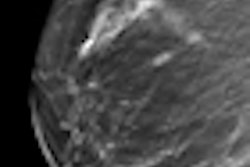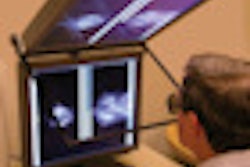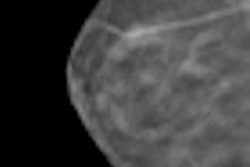Replacing the rotating mammography x-ray tube of a digital breast tomosynthesis (DBT) device with a stationary design increases the system's spatial resolution and reduces scanning time, according to data presented on July 31 at the American Association of Physicists in Medicine (AAPM) annual meeting.
Researchers at the University of North Carolina at Chapel Hill developed a prototype stationary DBT system that does not include a rotating source; instead, it uses an array of carbon nanotube (CNT) x-ray sources retrofitted onto a Hologic Selenia Dimensions DBT system.
"In conventional DBT systems, a single x-ray source moves over a limited angle arc," wrote lead presenter Andrew Tucker, PhD, and colleagues in the presentation abstract. "This leads to motion blurring in the projection images associated with x-ray source motion and total scan times."
In the prototype device, Tucker's group used a linear-source array with 31 x-ray-generating focal spots distributed over a 30° angular span. The team used a phantom to evaluate the quality of the reconstruction images in different configurations.
Tucker's team found that system resolution along the scanning direction increased from 3.0 cycles/mm with DBT to 4.2 cycles/mm with the stationary DBT device, at a magnification factor of 1.08.
"We demonstrated successful construction and operation of the [stationary DBT] system integrating a CNT x-ray source array with a Hologic DBT system," Tucker's team wrote. "The spatial resolution of the [stationary DBT] system is ... substantially increased over the corresponding DBT system."



















